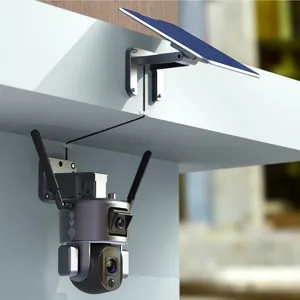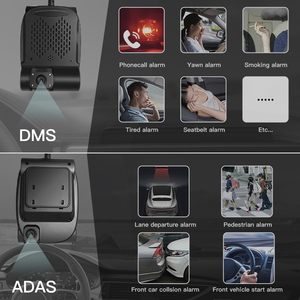(1048 products available)




































































































































































































































Bullet Cameras
Bullet hidden cameras are slim and cylindrical, making them easy to mount on walls or ceilings. These types of hidden security cameras are highly visible; some people consider this a disadvantage when trying to catch someone in the act. However, their resolution is usually high, with many offering 1080p or higher. They are great for both indoor and outdoor use, thanks to their weatherproof casing. Many bullet cameras also come with a fixed lens.
Dome Cameras
Dome hidden cameras are named for their dome-shaped design. They are, in many ways, the opposite of bullet cameras. They are less obtrusive and often easier to install. Many dome cameras feature a varifocal lens that allows users to adjust the zoom and focus, providing flexibility in monitoring options. However, they can have slightly lower resolution compared to bullet models, depending on the layout.
AHD Cameras
These cameras transmit HD video over existing analog coaxial cabling. AHD surveillance cameras offer users the ability to upgrade their systems without reinstalling new wiring. They often provide 720p or 1080p resolution. AHD Cameras are suitable for users who want high-definition video without the costs of fully transitioning to a digital IP setup.
Wireless Cameras
Wireless hidden cameras use Wi-Fi to transmit video, making installation simpler. They are ideal for locations where running cables is not feasible. Many offer features like cloud storage, remote viewing via smartphones, and built-in batteries. However, they can sometimes suffer from interference, which affects the reliability of the signals.
CCTV Cameras
A closed-circuit television camera transmits video to a limited set of monitors for real-time surveillance. CCTV cameras can be wired or wireless. They are often integrated into larger security systems. Users get the benefits of continuous monitoring and can be connected to a DVR for video storage. They are commonly used in commercial premises and some residential setups.
Crime Prevention and Deterrence
Installing hidden cameras acts as a deterrent to potential criminals. Knowing that they are being recorded often prevents theft, vandalism, and other illegal activities. This effect not only helps in preventing crime but also reduces costs associated with theft and loss for businesses and homeowners. Recording capabilities allow law enforcement to quickly investigate crimes. This leads to faster recovery of stolen property or identification of suspects. When criminals see on the footage that they have been captured, it discourages them from continuing their illicit activities.
Monitoring Employees and Enhancing Productivity
Hidden cameras in a workplace allow business owners to monitor employee productivity and ensure that they adhere to safety protocols and company policies. This helps identify areas where additional training might be necessary or where processes need to be improved. Continuous monitoring allows for instant feedback and helps enhance productivity. Some employers use hidden cameras to monitor workers in sensitive jobs, such as caregivers in senior homes or personal in medical facilities. The footage is used to ensure that customers receive proper care.
Remote Monitoring and Peace of Mind
Hidden cameras allow business owners and homeowners to keep track of their property remotely. Many modern models can stream live footage to a smartphone. This is especially valuable for those who manage multiple locations or who are frequently away from home. Continuous monitoring allows users to verify that everything is running smoothly. It helps detect issues like equipment failure, unauthorized access, or even safety incidents. Know that they have real-time access to live feed gives users a greater sense of security.
Enhanced Safety in High-Risk Environments
In industries like construction, manufacturing, and mining, hidden cameras play a critical role in safety monitoring. They help ensure that workers adhere to safety protocols and identify potential hazards. This not only protects workers but also helps businesses comply with regulations and avoid costly fines. In sensitive areas such as transportation and logistics, hidden cameras monitor valuable goods and ensure that products reach their destination safely.
Streamlining Insurance Claims
Footage from hidden cameras can be crucial in resolving disputes related to insurance claims. Whether it's a property damage claim or an accident incident, clear video evidence can speed up the claims process. This footage helps insurers quickly determine fault and validity. It saves businesses and homeowners potentially thousands of dollars.
Camera resolution
The camera resolution refers to how clear the pictures or videos from the camera will be. Larger numbers mean sharper images. It usually comes in specs such as 720p, 1080p, or 4k. p is short for progressive scan, and it determines how many lines of the picture will be visible at one time. A higher p number means a better picture. Look for a camera with at least 1080p for clear video. It is great for keeping track of things like kids, caregivers, or employees, especially in low light.
Audio recording
Lots of cameras come with an option to record audio. This feature allows users to listen to what is being said in the room. Note that it is essential to check the legality of recording audio because a lot of places have laws about it. Customers should buy a camera that uses an extra memory card to store recordings. Choose a camera with card slots for memory cards so that it is easy to transfer audio and video files to the computer.
Battery and charging
Many spy cameras run on batteries. Some batteries are rechargeable but others have to be replaced. Look for one with a rechargeable battery because once it runs out, it will need to be recharged again. Also, check how long the battery lasts. Get a camera with a battery that lasts a long time, so users do not have to keep charging it often. Easy access to the place where the battery is located makes it easy to change or recharge the battery when needed.
Remote viewing
Many hidden cameras let users view live video from a phone or computer anywhere with the internet. This is called remote viewing. It is helpful for tracking kids, caregivers, or employees while being away. To use this feature, find out if the camera connects to Wi-Fi and whether there are special apps or websites to set up remotes viewing. Also, see how often the live video updates and whether it is in real-time. Choose a camera that updates quickly to watch what is happening right away.
Camera lens type
Spy cameras come with different kinds of lenses. Standard lenses provide a regular view, while wide-angle lenses capture more of the area in front of the camera. Zoom lenses allow users to see objects far away in greater detail. Macro lenses work best for close-up shots of small things. It is important to consider what kind of monitoring is needed before buying a camera. The right lens helps ensure the camera captures everything properly.
Area of Installation
Consider the area where the hidden camera will be installed. Indoor cameras typically do not need weatherproof housing but may need to blend in with indoor decor. Outdoor cameras must be housed in weatherproof casings to resist rain, snow, heat, etc. Also, think about the viewing angles needed. Wide-angle lenses are useful for monitoring larger areas, while cameras with narrow focal lengths are better for close-up, detailed views.
Camera Functionality
Choose between wired and wireless cameras based on property layout and personal preference. Wired cameras offer stable connections and do not require battery replacements. On the flip side, wireless cameras are easier to install in tricky-to-reach areas. Go for options with a motion detection feature. It is useful for sending instant alerts when movement is detected. Also, cameras with infrared night vision support surveillance in low-light conditions.
Storage Options
Consider how to store recorded footage. Look for cameras with local storage options like memory cards. Cameras with cloud storage let users access video clips from anywhere. Some provide free basic cloud storage before charging subscription fees. Think about how long video needs to be kept before space becomes tight. Longer storage needs may require a camera with larger-capacity memory cards or cloud plans.
Camera Placement
Keep in mind the placement of the spy camera. This should be in an area that gives an entire view of the space without obstruction. Consider the height and angle of the camera to ensure it captures things clearly. Pick a spot where the camera will have unobstructed access to light and movement. Check that its field of vision will cover the entire important area..
Legal and Privacy Considerations
Legally, it is important to learn about surveillance laws in a locality. Different areas have special rules about secretly recording audio or using cameras in private spaces. Consult a local expert if unsure. On the flip side, discuss plans to install hidden cameras with employees or housemates. Being open about monitoring helps avoid misunderstandings later.
Professionally wired cameras should be installed by an expert. Wireless cameras just need to mount the camera and connect it to Wi-Fi. For wired cameras, mount the camera, then run wires to power it and connect it to the DVR or recording device.
Recording laws vary by location. Some places have rules against recording audio without telling anyone. Before using a camera that records sound, consider the local rules.
Access depends on storage type. For cameras with memory cards, remove the card and put it in a computer. If the camera uses cloud storage, log in to the app or website to view recorded videos.
Rechargeable batteries need regular recharging. Check how long the battery lasts, then set up a routine to recharge or replace the battery.
Not every camera has fees. Cloud storage cameras may have subscription charges for storage plans. Read the camera instructions to learn about next steps for storage.